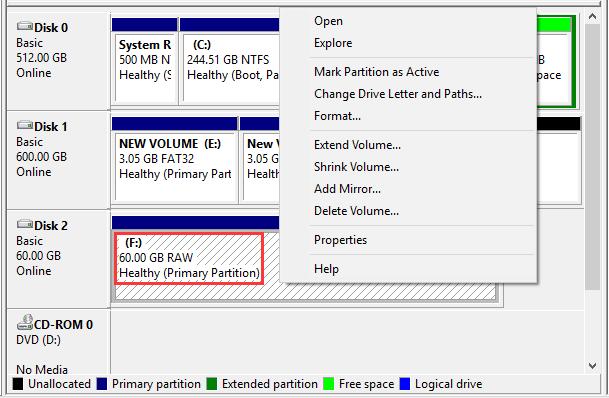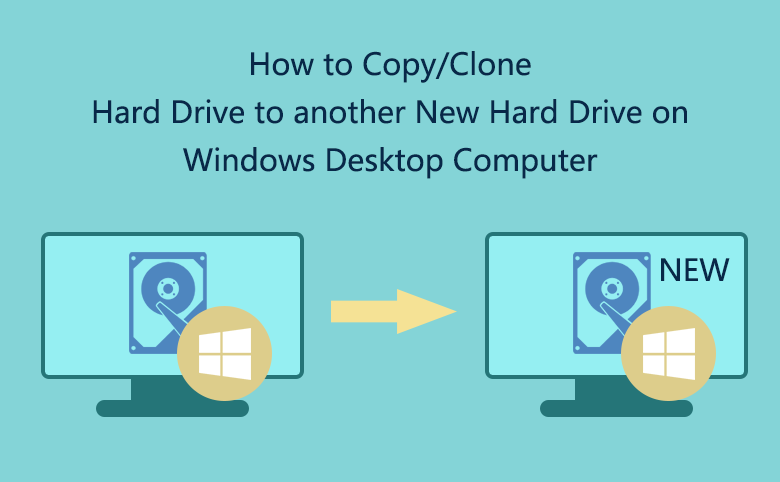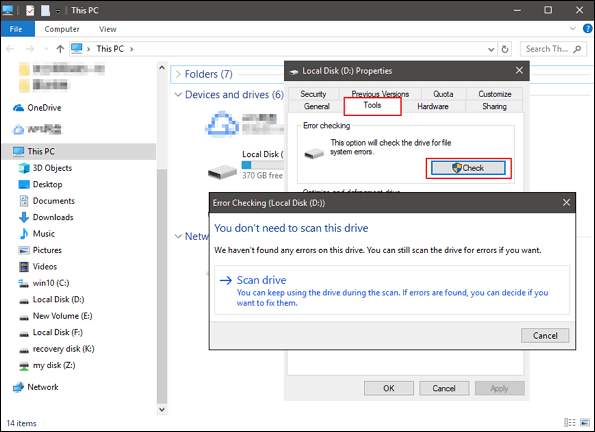

- Create external hard drive recovery partition how to#
- Create external hard drive recovery partition for mac#
- Create external hard drive recovery partition Pc#
- Create external hard drive recovery partition windows#
To convert a disk from MBR to GPT or vice versa, you first have to delete all volumes from the disk, which erases everything on the disk.
Create external hard drive recovery partition windows#
Windows automatically uses the appropriate disk type.


You don't usually have to worry about partition style. The older Master Boot Record (MBR) disk type is used by 32-bit PCs, older PCs, and removable drives such as memory cards.

GPT is more robust and allows for volumes bigger than 2 TB. Most PCs use the GUID Partition Table (GPT) disk type for hard drives and SSDs.
Create external hard drive recovery partition how to#
Windows uses the partition style to understand how to access the data on the disk. Each partition - even if there's only one - has to have a partition style - GPT or MBR. Specify the file system you want to use (usually NTFS), select Next, and then Finish.ĭisks can be divided into multiple chunks called partitions. Specify the drive letter you want to assign to the volume, and then select Next. Specify the size of the volume, and then select Next again.įor the volume size, the common approach is to accept the default size, which uses the whole drive.
Create external hard drive recovery partition Pc#
Windows updates to improve security and PC performance periodically, so we recommend you recreate the recovery drive annually. That way, if your PC ever experiences a major issue such as hardware failure, you'll be able to use the recovery drive to reinstall Windows 11. Select and hold (or right-click) the unallocated space on the drive, and then select New Simple Volume. It's a good idea to create a recovery drive. If initializing fails for some reason, see A disk's status is Not Initialized or the disk is missing entirely. The disk status briefly changes to Initializing and then to the Online status. If you need to change the partition style (GPT or MBR), see About partition styles - GPT and MBR. In the Initialize Disk dialog box, make sure the correct disk is selected, and then choose OK to accept the default partition style. These disks are only formatted and then assigned a drive letter. If the disk is listed as Offline, first right-click the disk and select Online. In Disk Management, right-click the disk you want to initialize, and then select Initialize Disk. In the search box on the taskbar, enter Computer Management.If you can't open Disk Management as an administrator, follow these steps: Select and hold (or right-click) Disk Management, and then select Run as administrator > Yes.In the search box on the taskbar, enter Disk Management.Open Disk Management with administrator permissions. If you prefer to use PowerShell, run the Initialize-Disk cmdlet. The following steps show how to initialize a new disk by using Disk Management. For details, see A disk's status is Not Initialized or the disk is missing entirely. Instead, we recommend troubleshooting the disk to see if you can read the files. It does this by working with the boot loader to offer users good experiences during system startup.If your disk already contains necessary files, don't initialize the disk. It’s the function of the boot loaders to ensure that all the necessary files and utilities have been booted before the completion of the booting sequence.The ESP ensures that all errors encountered during system booting phase are resolved. The UEFI firmware works during the process of booting a computer to load files stored on the ESP in order to start installed operating system and system utilities. The EFI is most used by systems that adhere to the Unified Extensive Firmware Interface (UEFI). Windows computer uses it because they contain the following four main components: The EFI System Partition (ESP) is a type of partition on a Windows computer that creates several regions on the PC’s hard disk so that information stored on the different partitions can be managed separately by the Windows operating system. And we're going to talk about how to delete and create EFI system partition on Windows 11/10, and will present you the solution to recover lost data from EFI system partition. In this post, you'll learn "what is EFI system partition". LineRescue Recover Deleted files from Win/Hard Drive
Create external hard drive recovery partition for mac#
AnyRecover for Win Recover Deleted files from Win/Hard DriveĪnyRecover for Mac Recover Deleted files from Mac/Hard DriveĪnyRecover for iOS Recover Deleted files from iPhoneĪnyRecover for Android Recover Deleted files from Android


 0 kommentar(er)
0 kommentar(er)
